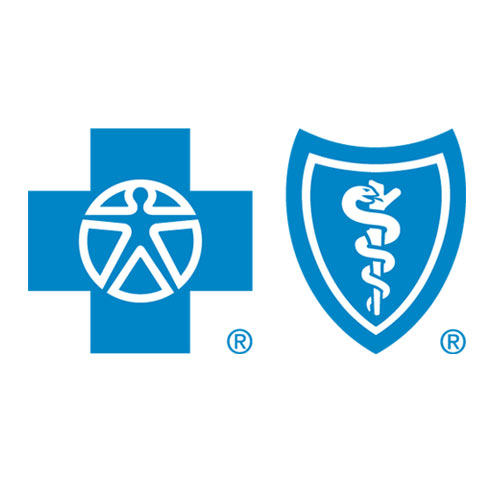The importance of patient-centered care for members with a serious illness
September 17, 2021For someone managing a serious illness, it can be overwhelming to keep track of all the appointments, doctors and nurses, new medications and ever-evolving treatment information. Even when things are going according to plan, there’s a lot to manage. And in times of great stress, the world of health care can feel fragmented, rushed and impersonal. That’s where some additional help managing the big picture can be useful.
 For Blue Cross and Blue Shield of Minnesota members with serious illness, Livio Health has been making a difference since 2019 by providing tailored medical care through in-home, video and phone visits. Interdisciplinary teams, made up of nurses, medical social workers, advanced practice providers and chaplains, explore a patient’s medical, social, emotional and spiritual needs and then work together to create a comprehensive care plan.
For Blue Cross and Blue Shield of Minnesota members with serious illness, Livio Health has been making a difference since 2019 by providing tailored medical care through in-home, video and phone visits. Interdisciplinary teams, made up of nurses, medical social workers, advanced practice providers and chaplains, explore a patient’s medical, social, emotional and spiritual needs and then work together to create a comprehensive care plan.
We connected with Livio Health advanced practice nurse Kerstin Lappen and social worker Laurie Garske to better understand what a patient’s journey with Livio Health might look like.
How do patients first start working with Livio Health?
 Laurie: Patients come to Livio in several different ways. We work with Blue Cross and Blue Shield of Minnesota to identify individuals who could benefit from additional support in managing their chronic conditions. Additionally, we partner with some medical clinics and providers who refer patients to us.
Laurie: Patients come to Livio in several different ways. We work with Blue Cross and Blue Shield of Minnesota to identify individuals who could benefit from additional support in managing their chronic conditions. Additionally, we partner with some medical clinics and providers who refer patients to us.
Kerstin: The way patients are introduced to Livio is very different than the usual model. Livio proactively reaches out to the patient and family to offer this support, which can be a new and beneficial health care experience for some.
Livio currently serves Blue Cross members with Medicare Advantage and select fully insured Commercial and Individual plans. Blue Cross recently expanded this access to its members with a Minnesota Senior Health Options (MSHO) plan.
What are the first things you focus on when meeting a new patient?
 Kerstin: We let the patient and family guide what needs to be focused on. By listening to their story and asking questions, we identify what obstacles exist and what is urgent for this person. For a patient with cancer, it may be pain or nausea that is uncontrolled paired with a caregiver that is overwhelmed. For a patient with heart failure who has become isolated during COVID, it may be addressing emotional issues, like grief or depression, and providing both the support of the social worker and looking into medications that could possibly help.
Kerstin: We let the patient and family guide what needs to be focused on. By listening to their story and asking questions, we identify what obstacles exist and what is urgent for this person. For a patient with cancer, it may be pain or nausea that is uncontrolled paired with a caregiver that is overwhelmed. For a patient with heart failure who has become isolated during COVID, it may be addressing emotional issues, like grief or depression, and providing both the support of the social worker and looking into medications that could possibly help.
Some patients feel like they have “loose ends” that need to be addressed, such as completing a health care directive. We can provide the resources and assistance they need.
Laurie: Each visit is dedicated to the person in front of us. I’m focused on identifying what’s most important to them. What are their greatest concerns? What strengths in their life make them proud? How do they view their health? Where do they see areas of need? From there, I explain how we might provide support to match.
We work together with patients to determine a touchpoint interval that makes sense for them. Some patients prefer regular check-ins to actively manage challenges or goals they are working towards. Other patients like the freedom of less frequent visits. We let them take the lead and decide how often they’d like us to stay in touch.
How do the different roles of the care team come together to provide support?
Laurie: Livio clinicians are all here to help patients and families navigate the health care system and life with a serious illness. In traditional health care settings, providers typically focus on their specialty and may not have time to coordinate with others. This can leave gaps in communication, result in duplicative treatments and cause patients to feel like they are not being heard. At Livio, we make sure everyone is on the same page and the treatment plan aligns to the patient’s values.
Kerstin: Livio care teams are comprised of an advanced practice provider, medical social worker, nurse care coordinator and chaplain. We are truly an interdisciplinary team, each with individual areas of expertise. As a patient’s needs and preferences change, so does our tailored support.
What does a typical in-person visit look like?

Kerstin: When I see a patient face-to-face, I can perform a focused physical exam. I can take a patient’s pulse, measure blood pressure, listen to their lungs, examine a new rash, measure ankle swelling and assess any new symptoms. I’ll take note of any new concerns or needs and use those to guide my discussion with the patient. Once we identify the patient’s goals and treatment preferences, I’ll walk them through potential next steps and make sure they feel comfortable managing things.
Laurie: At an in-person visit, we meet at your home and stay about one hour. Meeting face-to-face can oftentimes lead to more personal and detailed conversations. As a social worker, I can better understand living situations and assess concerns, such as fall hazards, and help patients solve for any accessibility needs. In an in-person visit, I can also walk patients and families through health care documents, like Health Care Directives. Together, we discuss their preferences and I can answer questions on the spot.
How do you connect with patients over a telehealth visit?
Kerstin: The pandemic has taught us that caring and listening do not need to be in-person to be impactful. We have had great success forming candid connections with patients and families despite not being face-to-face. I prepare for visits by reviewing medical records and familiarizing myself with each patient’s unique situation. That way, patients don’t need to explain their health over and over at each visit and instead, we can dive directly into their evolving needs.
Laurie: Even if I can’t see a patient in-person, I can still get to know who they are, see small glimpses of their personal life and make a genuine connection over technology. Phone and video visits allow me to stay connected with my patients. Whether that’s asking about the dog I see in their video background, sparking a connection over the weather that day or sharing bits of my personal life that we have in common, relationship-building is not lost over the phone.
Livio patients are connected with the care that’s right for them—whatever that looks like for each individual. Patients can skip the commute and long wait time; instead connecting with us in the comfort of their own home. Livio offers in-person visits in the seven-county metro and phone or video visits for all patients statewide. If urgent needs arise, licensed clinicians are available 24/7 to answer questions or provide immediate guidance.
To learn more about Livio Health, visit liviohealth.com or call the number on the back of your insurance card to see if you are eligible for Livio’s services.



